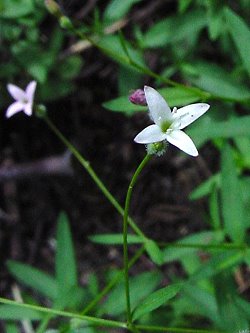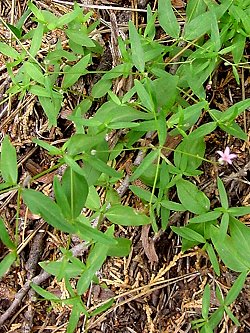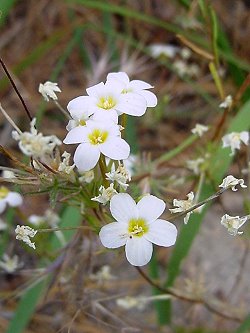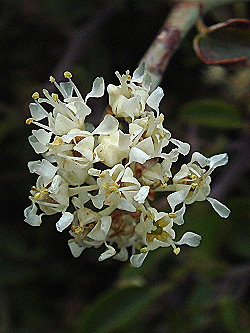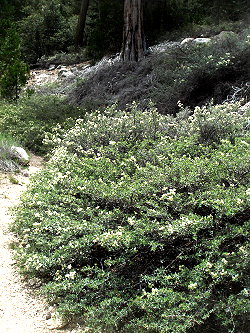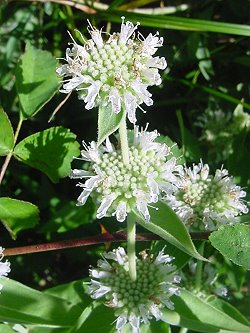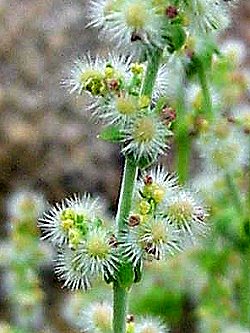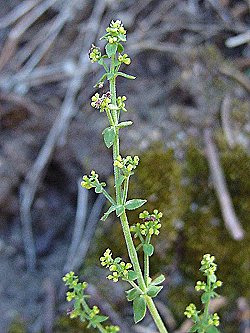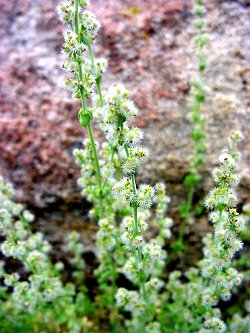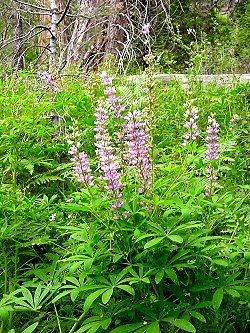|
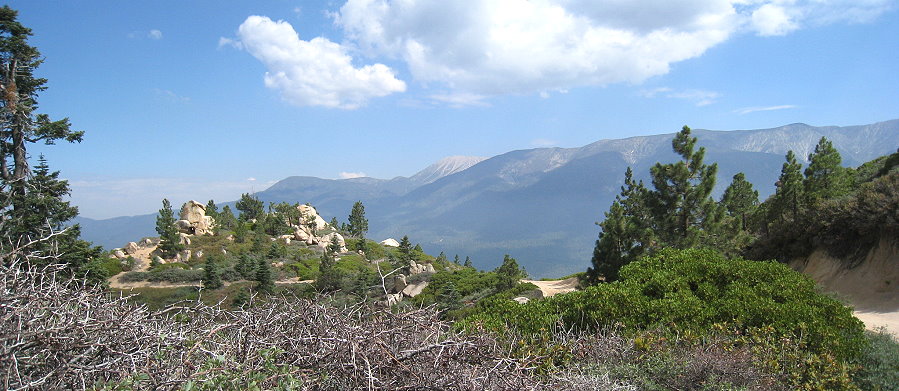 |
These pictures were taken mostly on a field trip led by Lorrae Fuentes from Rancho Santa Ana Botanic Garden (now called the California Botanic Garden), and on a couple of follow-up trips I made by myself a few weeks later to the same and some different localities, and this gallery was put together in 2022. This was one of the first botany outings I took for the purpose of photographing wildflowers and since then I've been on hundreds of field trips all over southern California and elsewhere. The locations I visited on these trips included Snow Valley, Knickerbocker Canyon, Arrastre Flats, Champion Lodgepole pine, North Baldwin Lake, Holcombe Valley, and the Fish Creek/Heartbar Wilderness. Lorrae was very knowledgeable and an excellent guide. She has conducted numerous classes at the Garden in addition to leading field trips. I was sorry when her time at the Garden came to an end, but she has kept up with botany by overseeing the yearly spring Wildflower Hotline for the Theodore Payne Foundation and pointing people in the right direction across Southern California for the best floral displays. She is one of the two people, the other being Tom Chester, who were most responsible for guiding my early endeavors across the plant world, and I am enormously grateful to them both. An asterisk after the common name indicates a non-native species. |
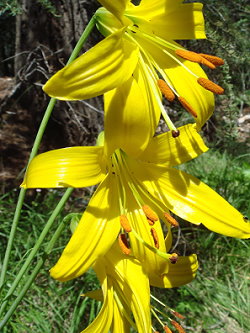 |
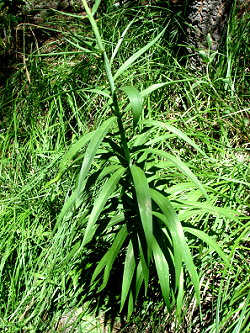 |
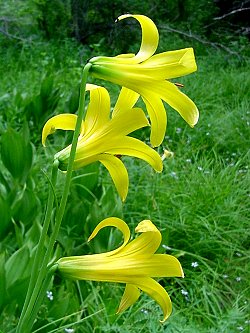 |
||
| Lemon lily Lilium parryi Liliaceae [Named for Charles Christopher Parry, 1823-1890] |
||||
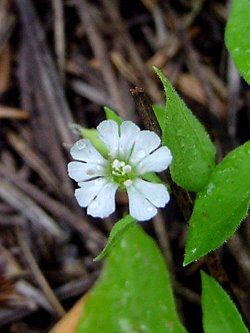 |
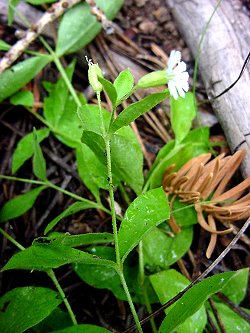 |
|
Menzies' campion Silene menziesii Caryophyllaceae [Named for Archibald Menzies, 1754-1842] |
||
|
|
|
|
|||||
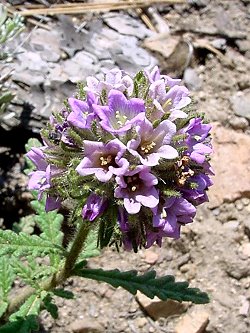 |
|||||
Rothrock's nama Nama rothrockii Boraginaceae [Named for Joseph Trimble Rothrock, 1839-1922] |
|
|
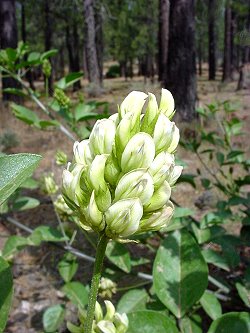 |
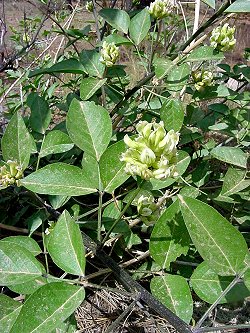 |
|
Parish's psoralea Rupertia rigida Fabaceae [Named for Rupert Charles Barneby, 1911-2000] |
||
|
|
|
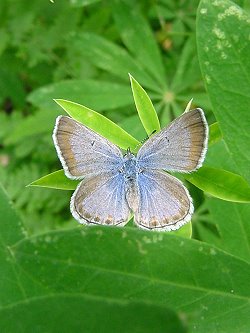 |
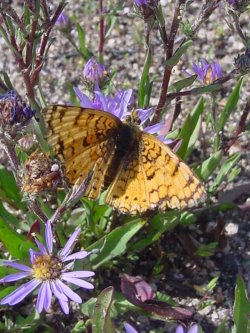 |
|
| Spring azure Celastrina ladon Lycaenidae |
Mylitta crescent Phycioides mylitta Nymphalidae |
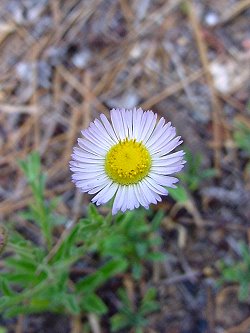 |
 |
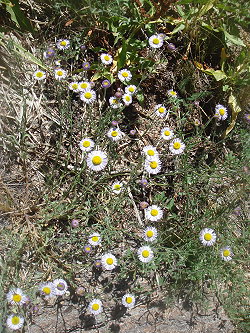 |
||
| Spreading fleabane Erigeron divergens Asteraceae |
||||
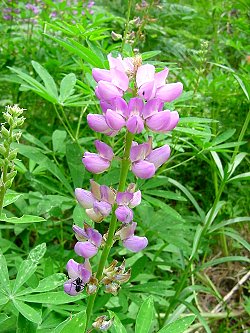 |
|
||
| Parish's lupine Lupinus latifolius var. parishii Fabaceae |
[Most family names derive from the name of a particular genus: Polygonaceae/Polygonum. Asteraceae/Aster. Apocynaceae/ Apocynum. Polemoniaceae/Polymonium. Ephedraceae/Ephedra. Juncaceae/Juncus. And so on. I was curious about the family name Fabaceae and where it came from. It turns out that there used to be a genus Faba, now obsolete, which has been placed in with the Vicias. Vicia faba used to be Faba sativa, and goes by the culinary name of broad bean, fava or faba bean. It was popularized by a line in the movie Silence of the Lambs: "I ate his liver with some fava beans and a nice Chianti." |
| PHOTO GALLERIES INDEX |
CALFLORA.NET | PAGE TWO OF SEVEN |
| CALIFORNIA PLANT NAMES: LATIN AND GREEK MEANINGS AND DERIVATIONS | ||
| VIRGINIA PLANT NAMES: LATIN AND GREEK MEANINGS AND DERIVATIONS | ||
Copyright @ 2022 by Michael L. Charters
The photographs contained on these pages may not be reproduced without the express written permission of the author.
Comments and/or questions may be addressed to mmlcharters[at]gmail.com.
